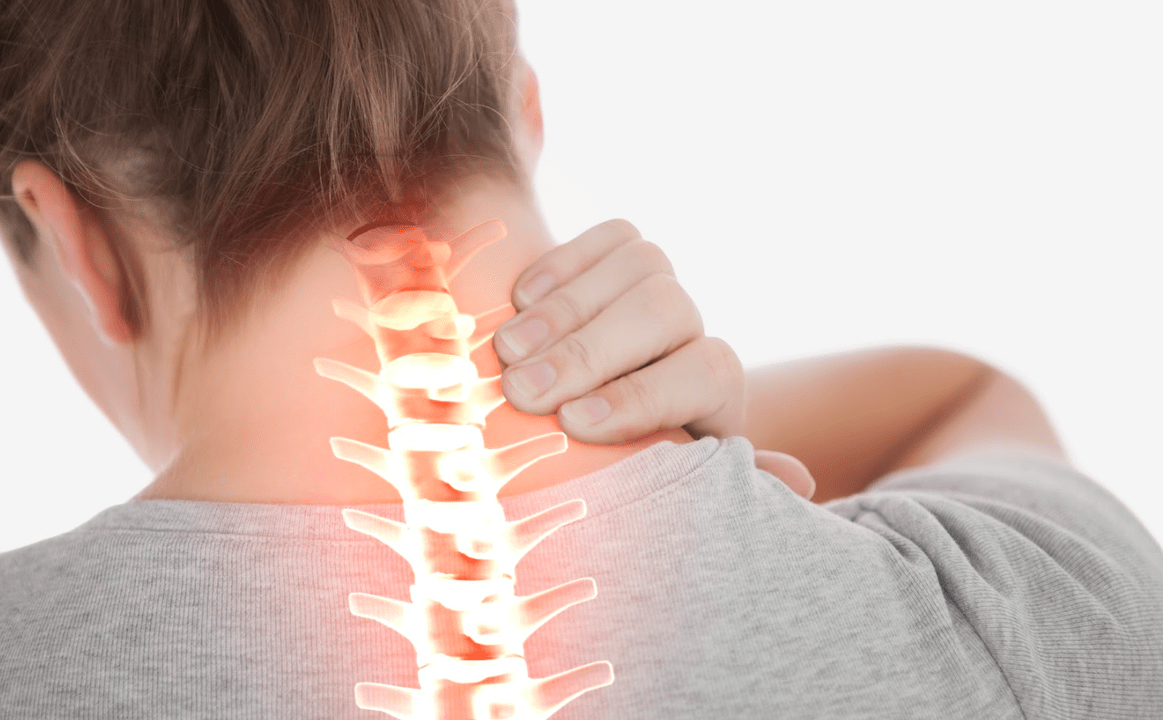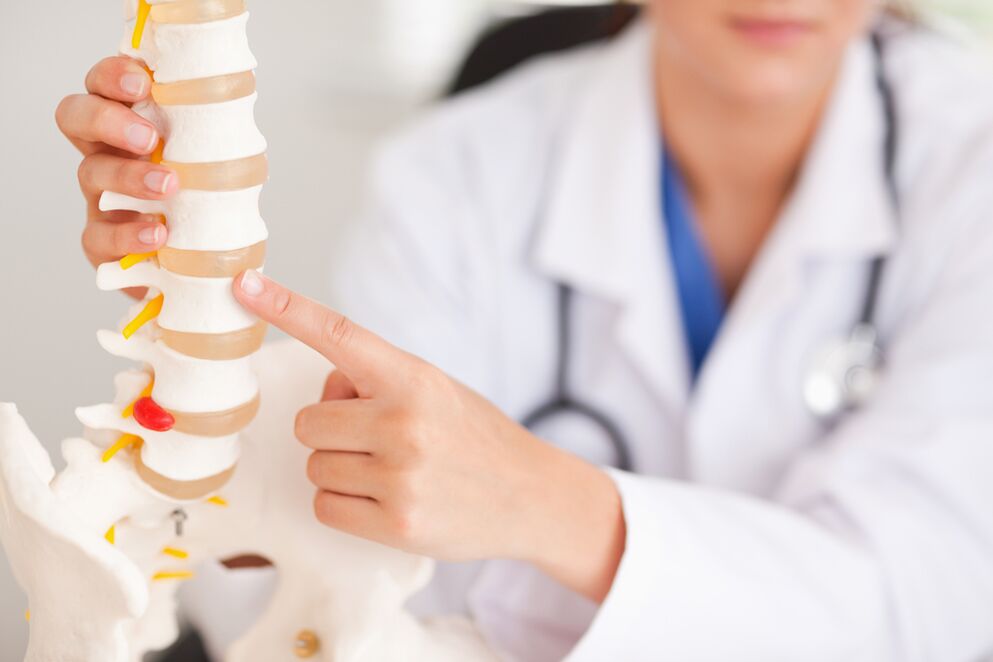Osteochondrosis is a delegan-destructive lesion that combines the defeat of the bodies of ligament and intervertebral disks, spines, articular devices, ligamentary devices and intervertebral disks. This disease is equally quite common in all countries - from 45 to 85 people suffering from this disease. In patients of 30-35 years old, osteocondrosis occurred, but the cases of previously starting the disease are known. Men and women get sick about the same soon.

There is no unified cause of osteocondrosis development. There are factors that cause a large number of inclined. The main ones are as follows:
- Spinal injuries (fractures, bruises, dislocations);
- Hereditary tendency;
- Diseases that cause a waist overload of footo diseases - it includes a variety of legs of the foot, various deformity, valgus deformation;
- Wearing a long time and wearing anxious shoes (causing the back of the waist);
- Overweight and obesity;
- Age - changes;
- Seated lifestyle;
- Athletes who firmly leave their training and classes;
- Metabolic disorders;
- Spinal curve (Kyphoz, Lordoz, Scoliosis);
- Professional Features - Weight lifting, often work in the body position of the body, often rotating shifts and body;
- Frequent and stretch hypothermia;
- Stress;
- A special climate in both place and at work - air temperature and high humidity.
When exposed to one or more reasons, the development of the disease begins. It is custom to divide into four main stages:
- The first stage. A reduction in the amount of moisture based on the intervertebral disk is more straightforward, and the distance between the spines decreases. Cartilage is covered with small cracks.
- The second stage. Due to the descent in the distance between Vertebra, the muscle and ligamament device occurs. This leads to pathological mobility and displacement of vertebral objects.
- The third stage. Due to progressive processes in the spine, the compression of intervertebral disks (protrusion), Vertabra's sublance occurs.
- Fourth stage. Vertabrae, bone spites (osteophylls), the mobility of Vertabra seems to be aimed at preventing dislocations. Over time, there are many to completely lose the mobility of the affected vertebrae. In this case, there is a trauma of blood vessels and nerves near the spine and near the spine.
There is no illness in the first and final stages of the disease of clinical manifestations (pain).
There are many classifications of osteocondrosis. Every doctor chooses the most acceptable for himself. The following classifications are most commonly used:
Classification in the defeat of the spine:
- Cervical osteocondrosis;
- Thorakal osteocondrosis;
- Lomber osteocondrosis;
- The crown osteocondrosis;
- Extensive (general) osteocondrosis - 2 or more spinalism affects.
Classification (radiological stages) with a change in the intervertebral disk:
- 0 Stage - no disk change;
- Phase 1 - minor changes including maximum interior tears;
- 2 Stages - Severe changes to the disk while maintaining an external surface;
- Stage 3 - The whole disk is completely affected (cracks with the spread of the disk under the body's trunks, spreading to an external surface).
Clinical manifestations and classification with an impaired spinal processing rate:
- Phase 1 - The spine does not change, the patient feels a little pain in the lesion;
- 2 Stages - The functioning of the spine is violated (subluxers of vertebral objects are accelerated, the pain of the nerves, nerves), the pain of the destruction;
- Stage 3 - Spine deformes, intervertebral disks rholes, significant pain;
- Stage 4 - Patient is difficult to move, the mobility of spine is reduced, pain in the smallest movement. The patient is given disability.

Osteocondrosis's symptoms depend on the spine and the area of damage related to the degree of disorder.
The following signs are characterized for the expanded clinical view of the osteocondrosis of the cervical spine:
- Violation of visual acuteness;
- Dizziness;
- Tinnitus;
- "Flies" in front of the eyes and in front of the appearance of colored spots;
- Hearing loss;
- Nape, the occurrence of the headache in the temporary and parietal region while moving the cervical waist;
- Loss of consciousness;
- Snore;
- Suffocation of the sound or its weakening;
- Numbness and loss of sensitivity in the skin of the face, neck and hands;
- Destroying the tooth;
- Blood pressure staff.
The following symptoms are characteristically for the osteocondrosis of the spine:
- In the heart that lasts a long time, pain, hurting or pressing, often sharp, stitching, sharp, patients can show a certain painpoint;
- The numbness of the skin in the chest, belly and back;
- Pain in the spine, especially among the shoulder blades, was expressed strong;
- Pain while raising hands;
- Join when pain and subsequently exhaled with a sharp and deep breath;
- Pain, anxiety and challenges during the floors of the body in any direction.
The following symptoms are characteristic of osteocondrosis of the waist and sacral waist:
- Pain in the waist region that can give one or both legs on one or both legs strengthens with any movement of the spine in the affected area;
- Freezes a comfortable temperature for other parts of the regions;
- Sustainable tension in the muscles of the back, especially in the spine region;
- Fictitious feeling, creeping goosebumps and tingling in the skin of the legs and hips;
- Varicosis veins in the legs;
- Potential violations in men;
- Increased sweating;
- Palloru of the skin in the legs;
- Irregular menstruation in women.
With a long time and indifferent osteocondrosis, the patient with each other affected vertebrae with each other with each other, as a certain waist, pain, usually reduces or completely reduces leaves.
First of all, the doctor, initial diagnosis, conducts a patient survey and examination. Additional exam methods are set for approval. With osteochondrosis, the laboratory (tests) will not show any confirmation change because they are only instrumental.
Basic diagnostic methods include:
- X -Ray exam. It allows the spine to determine the degree of harm in the formation of their location and bone. You can determine the status of the state of bone channels and the state of intervertebral disks;
- Calculated Tomography (CT). The state, structure and form of intervertebral disks allow to determine the deformation of vertebrae and the state of the cogigation of nervous ends and roots;
- Magnetic Resonance Image (MRI). Allows identifying minor violations in the spine and determine the cases of controversial issues in cases;
- Ultrasonic procedure. Allows the spinal cord and other bodies to determine the degree of blood flow in nourishing veins;
- Myeleography. The method of rays of the spine using the contrast issue. Allows you to identify intervertebral hernias.
In the treatment of osteocondrosis, conservative treatment methods are used primarily. In this case, the approach to each patient must be individual and complex. Conservative treatment methods can be divided into 4 main groups:
- Drug treatment;
- Physiotherapy;
- Spa treatment;
- Diet (basics of proper nutrition).

Medications used in the treatment of osteocondrosis should be used during periods of gravity. Contributes to a decrease in symptoms and affects some reason in the development of the disease. Main groups of drugs used in the treatment of osteocondrosis:
- Nsaid. Nonsteroid drugs have antivocal, anti-inflammatory effects, and at the same time reduces the high temperature of the spine and its structure. Similarly, with signs, the first days of the exacerbation of the disease are determined in the form of injection. The frequency of use is 1-2 times a day. After that, if necessary, links to tablet forms of medications with the speed of treatment. The reception frequency is 4 times a day. In addition, tablets and needles, ointments or creams, spine are displayed 1-3 times in the region, and creams applied to the skin in the region.
- Musorelaxants. The increase in the growing muscle tone in this group is to cope with a great deal of convening transversely broken muscle fibers and facilitating the patient's condition. The average treatment course is about 1 month. Treatment with severe symptoms begins with injection forms of drugs. The dosage must begin with minimal, gradually increases until the therapeutic effect is gradually achieved, gradually reduces the abolition.
A few more groups are used as additional drugs:
- Vitamins. Accelerate tissue recovery processes, normalize the nervous conductivity, metabolism, etc. Normalize, these medications for osteocondrosis are almost always determined in the form of courses for 10 days. These are vitamins B1, B2, B6, E.
- Blood preparations. These drugs normalize blood flow in the veins and arteries, restore the muscle tone of blood vessels and restore metabolism. Most, tablet release forms are used. The treatment of these agents is up to 1 to 3 months. In addition, in extreme cases, the medication is possible for the first 5-10 days, the tablets are possible with the next transition.
- Glucocorticosteroids. Their anti-inflammatory, the effects of the deck, develops the work of NSAID and muscle. Depending on the severity of the patient's condition, injecting is determined in the form of a tablet in the form of subtle or thin or oral. The course of treatment is selected individually from several days to several weeks. The cancellation of the drug should occur gradually with a gradual decrease.
- Biogenic stimuliers. Accelerate metabolism, stimulate the tissue recovery, reduce inflammation and swelling of tissues and more. Most are used in the form of injection and is slightly widespread in the form of tablets or other forms for the oral administration. The course of treatment may vary from 1 week to 2-3 months, depending on the severity of the disease.
Treated physiotherapy measures, treated with pizcian vehicles, allow you to speed up recovery processes and allow to expand the remission when used except for exacerbations. There are many physiotherapy methods, and most are well applied to the treatment of osteocondrosis:
- Electrophorehez. Depending on the drug used in this procedure, analgesic effects are achieved. Metabolism has improved and normalization of blood flow in affected tissues.
- Acupuncture (acupuncture) with the help of the patient's skin with the help of the patient's skin, analgesic effects are achieved, restoration and metabolic processes are stimulated and inflammation decreases.
- Magnetotherapy. Reduces inflammation of pain, swelling and tissues, accelerates the nervous conductivity, normalizes metabolic processes
- Hand therapy. The mobility is restored in the waist joints, pain syndrome decreases.
- To massage. Normalizes muscle tone, eliminates back pain, restores nervous conductivity.
- Exercise therapy. The mobility of spine, reduce pain, restoration of ordinary lifestyle, strengthening the muscle frame of rear muscles, relaxing the back muscles, acceleration of the back muscles.
- Tightening of the spine. The mobility of the spine is restored, preventing the disease and the development of complications and anesthesia.
- Laser therapy. Improves blood supply, stimulates tissue recovery, reduces pain and inflammation, reduces the swelling of the back.
- Thermotherapy. Anesthesia effect, blood vessels and blood vessels, reducing inflammation in tissues, accelerating the restoration of cartilage recovery.
- Mudgarma (peloid therapy). Reduces pain in spine, reduces muscle spasm, reduces inflammatory processes, improves blood supply and metabolism.
A patient can be set for 1 physiotherapy event and their complex. It depends on the severity of the process of osteocondrosis and accompanied pathologies. The duration of the course of treatment is average 10-15 days. It is recommended to repeat 3-4 times a year. Thus, it is possible to reduce the speed of exacerbation and the speed of osteocondrosis several times.























